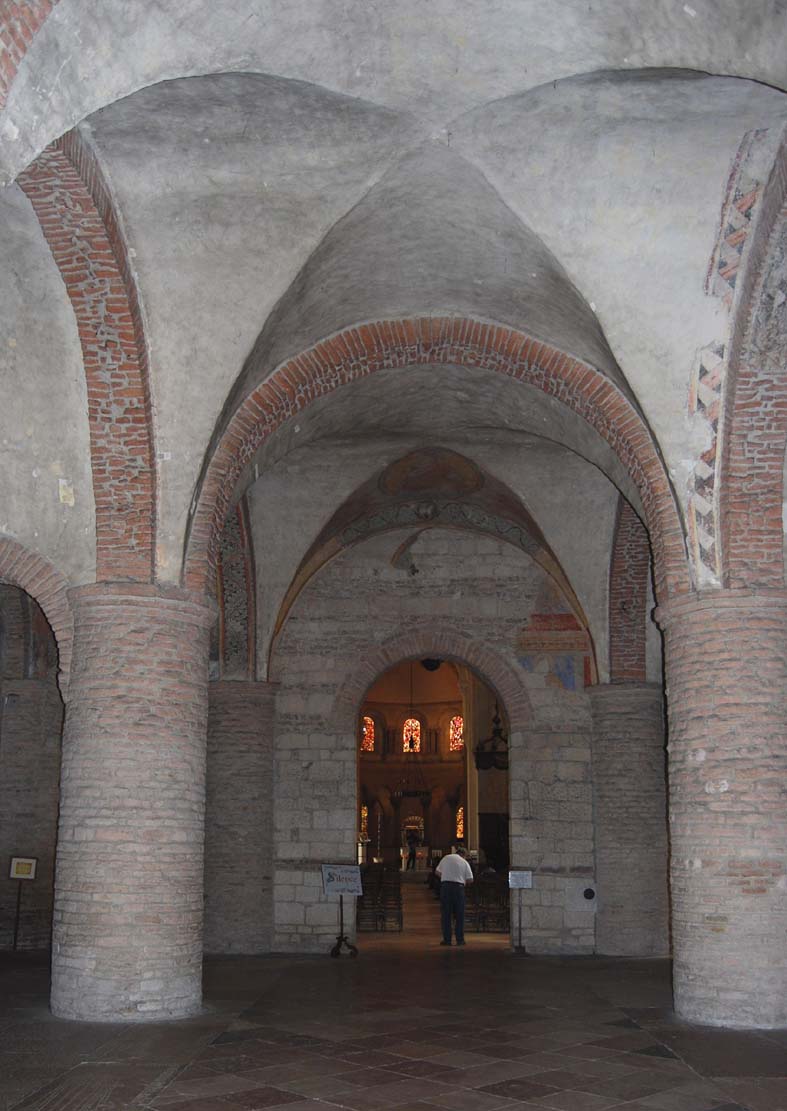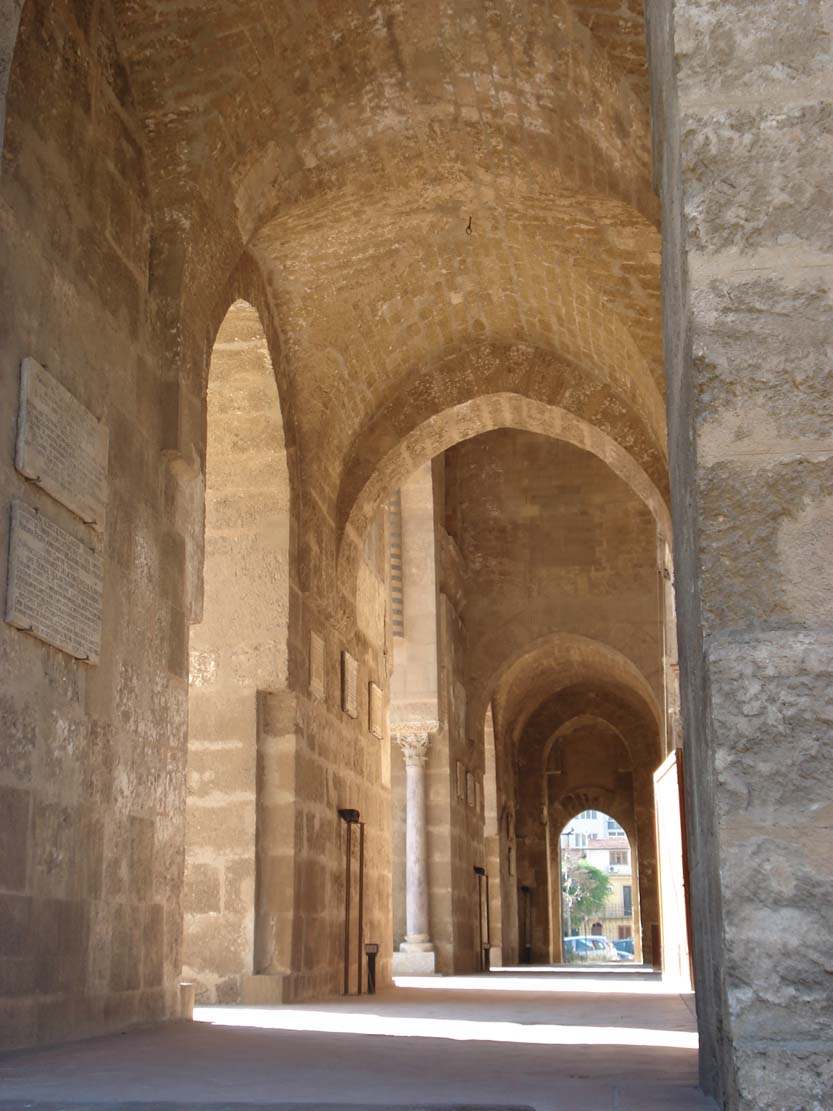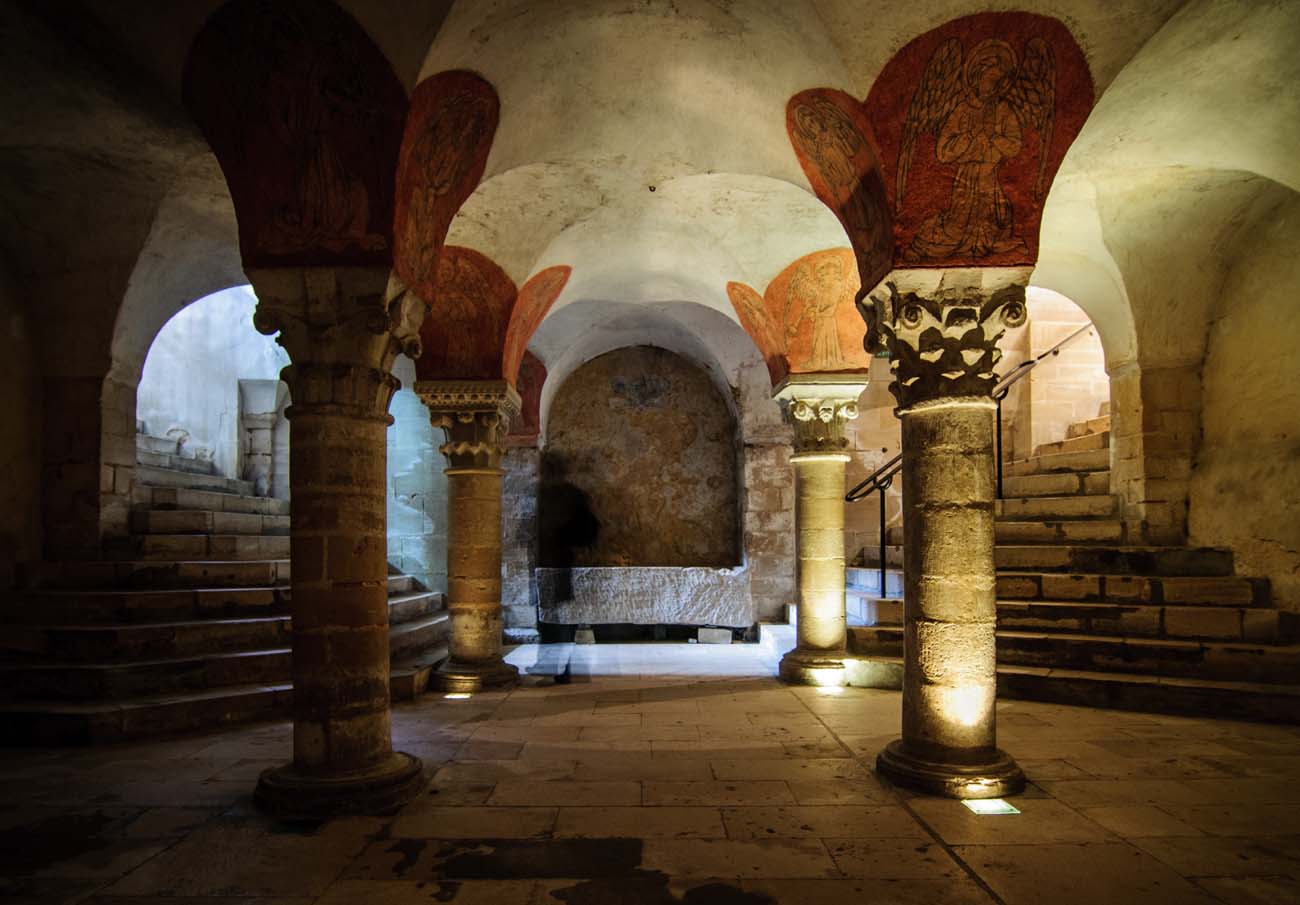The vault based on the principle of crossing at right angles two barrel vaults of the same diameter without ribs. It is supported on four pillars or columns located in the corners of the square (rooms). The supports are diagonally formed and the load is carried along them. The word “groin” refers to the edge between the intersecting vaults.
For the first time the groin vault was used by king of Pergamon Attalos I between 241 and 197 BC. Later it was widely used in the architecture of the ancient Romans. It was also very common in church architecture in the early Middle Ages. It provided the opportunity to build without massive supports and allow better illumination than the barrel vaults, thanks to the use of larger windows. During the gothic period, the groin vault was replaced by the more advanced rib vault.




